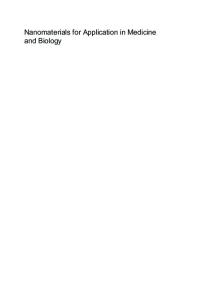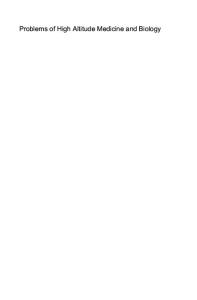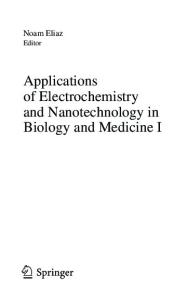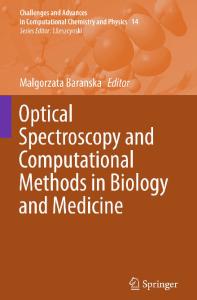Detectors in Medicine and Biology
The invention by Crookes at the end of the nineteenth century of a device called spinthariscope, which made use of the scintillating properties of Lead Sulfide allowed Rutherford to count α particles in an experiment, opening the way towards modern dosime
- PDF / 45,859,102 Bytes
- 1,083 Pages / 439.42 x 683.15 pts Page_size
- 39 Downloads / 385 Views
Particle Physics Reference Library Volume 2: Detectors for Particles and Radiation
Particle Physics Reference Library
Christian W. Fabjan • Herwig Schopper Editors
Particle Physics Reference Library Volume 2: Detectors for Particles and Radiation
Editors Christian W. Fabjan Austrian Academy of Sciences and University of Technology Vienna, Austria
ISBN 978-3-030-35317-9 https://doi.org/10.1007/978-3-030-35318-6
Herwig Schopper CERN Geneva, Switzerland
ISBN 978-3-030-35318-6 (eBook)
This book is an open access publication. © The Editor(s) (if applicable) and The Author(s) 2011, 2020 Open Access This book is licensed under the terms of the Creative Commons Attribution 4.0 International License (http://creativecommons.org/licenses/by/4.0/), which permits use, sharing, adaptation, distribution and reproduction in any medium or format, as long as you give appropriate credit to the original author(s) and the source, provide a link to the Creative Commons licence and indicate if changes were made. The images or other third party material in this book are included in the book’s Creative Commons licence, unless indicated otherwise in a credit line to the material. If material is not included in the book’s Creative Commons licence and your intended use is not permitted by statutory regulation or exceeds the permitted use, you will need to obtain permission directly from the copyright holder. The use of general descriptive names, registered names, trademarks, service marks, etc. in this publication does not imply, even in the absence of a specific statement, that such names are exempt from the relevant protective laws and regulations and therefore free for general use. The publisher, the authors, and the editors are safe to assume that the advice and information in this book are believed to be true and accurate at the date of publication. Neither the publisher nor the authors or the editors give a warranty, expressed or implied, with respect to the material contained herein or for any errors or omissions that may have been made. The publisher remains neutral with regard to jurisdictional claims in published maps and institutional affiliations. This Springer imprint is published by the registered company Springer Nature Switzerland AG. The registered company address is: Gewerbestrasse 11, 6330 Cham, Switzerland
Preface
For many years, the Landolt-Börnstein—Group I Elementary Particles, Nuclei and Atoms, Vol. 21A (Physics and Methods. Theory and Experiments, 2008), Vol. 21B1 (Elementary Particles. Detectors for Particles and Radiation. Part 1: Principles and Methods, 2011), Vol. 21B2 (Elementary Particles. Detectors for Particles and Radiation. Part 2: Systems and Applications), and Vol. 21C (Elementary Particles. Accelerators and Colliders, 2013), has served as a major reference work in the field of high-energy physics. When, not long after the publication of the last volume, open access (OA) became a reality for HEP journals in 2014, discussions between Springer and CERN intensified to find a solution for the “La











